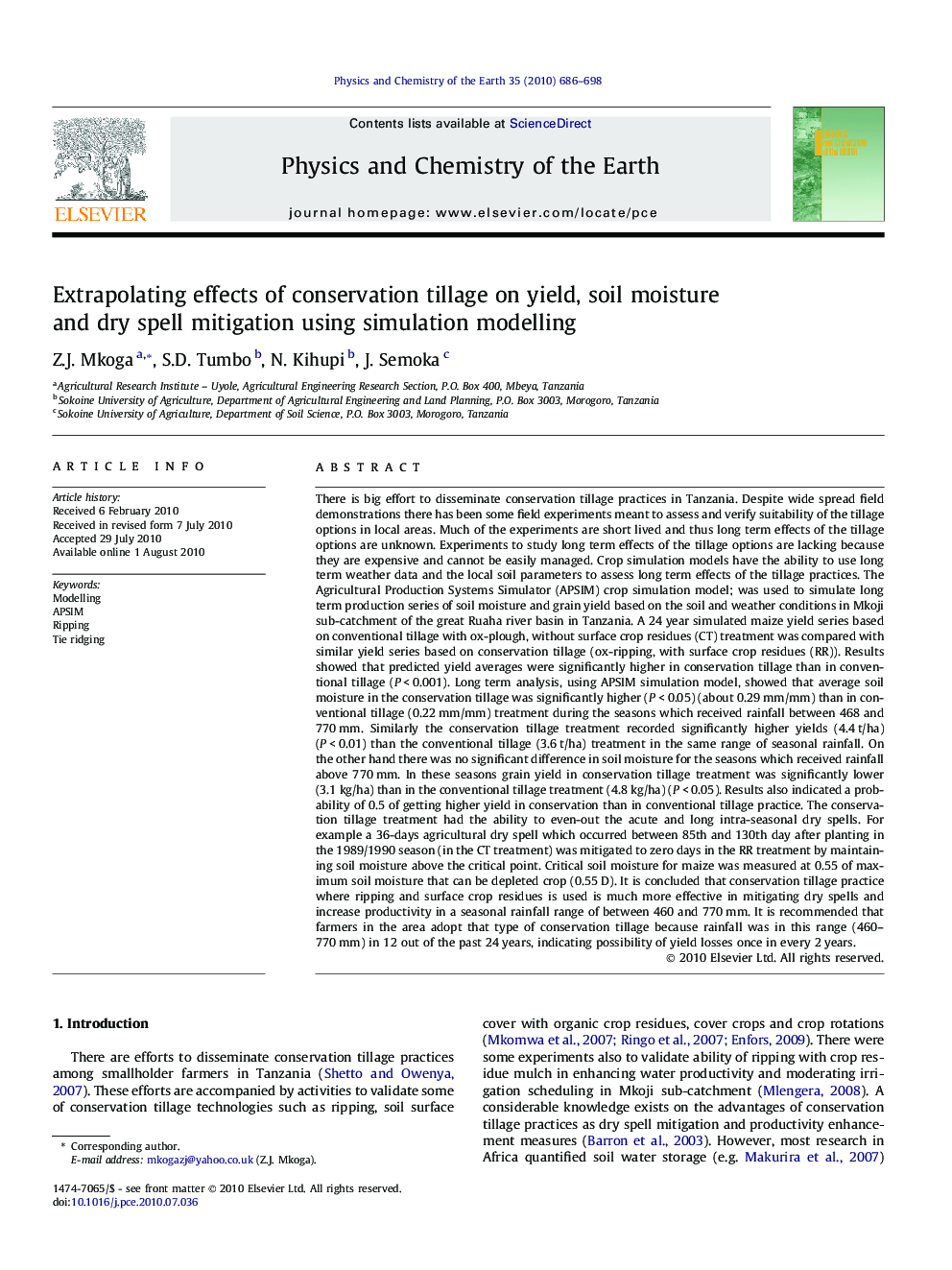| کد مقاله | کد نشریه | سال انتشار | مقاله انگلیسی | نسخه تمام متن |
|---|---|---|---|---|
| 4721772 | 1639382 | 2010 | 13 صفحه PDF | دانلود رایگان |

There is big effort to disseminate conservation tillage practices in Tanzania. Despite wide spread field demonstrations there has been some field experiments meant to assess and verify suitability of the tillage options in local areas. Much of the experiments are short lived and thus long term effects of the tillage options are unknown. Experiments to study long term effects of the tillage options are lacking because they are expensive and cannot be easily managed. Crop simulation models have the ability to use long term weather data and the local soil parameters to assess long term effects of the tillage practices. The Agricultural Production Systems Simulator (APSIM) crop simulation model; was used to simulate long term production series of soil moisture and grain yield based on the soil and weather conditions in Mkoji sub-catchment of the great Ruaha river basin in Tanzania. A 24 year simulated maize yield series based on conventional tillage with ox-plough, without surface crop residues (CT) treatment was compared with similar yield series based on conservation tillage (ox-ripping, with surface crop residues (RR)). Results showed that predicted yield averages were significantly higher in conservation tillage than in conventional tillage (P < 0.001). Long term analysis, using APSIM simulation model, showed that average soil moisture in the conservation tillage was significantly higher (P < 0.05) (about 0.29 mm/mm) than in conventional tillage (0.22 mm/mm) treatment during the seasons which received rainfall between 468 and 770 mm. Similarly the conservation tillage treatment recorded significantly higher yields (4.4 t/ha) (P < 0.01) than the conventional tillage (3.6 t/ha) treatment in the same range of seasonal rainfall. On the other hand there was no significant difference in soil moisture for the seasons which received rainfall above 770 mm. In these seasons grain yield in conservation tillage treatment was significantly lower (3.1 kg/ha) than in the conventional tillage treatment (4.8 kg/ha) (P < 0.05). Results also indicated a probability of 0.5 of getting higher yield in conservation than in conventional tillage practice. The conservation tillage treatment had the ability to even-out the acute and long intra-seasonal dry spells. For example a 36-days agricultural dry spell which occurred between 85th and 130th day after planting in the 1989/1990 season (in the CT treatment) was mitigated to zero days in the RR treatment by maintaining soil moisture above the critical point. Critical soil moisture for maize was measured at 0.55 of maximum soil moisture that can be depleted crop (0.55 D). It is concluded that conservation tillage practice where ripping and surface crop residues is used is much more effective in mitigating dry spells and increase productivity in a seasonal rainfall range of between 460 and 770 mm. It is recommended that farmers in the area adopt that type of conservation tillage because rainfall was in this range (460–770 mm) in 12 out of the past 24 years, indicating possibility of yield losses once in every 2 years.
Journal: Physics and Chemistry of the Earth, Parts A/B/C - Volume 35, Issues 13–14, 2010, Pages 686–698